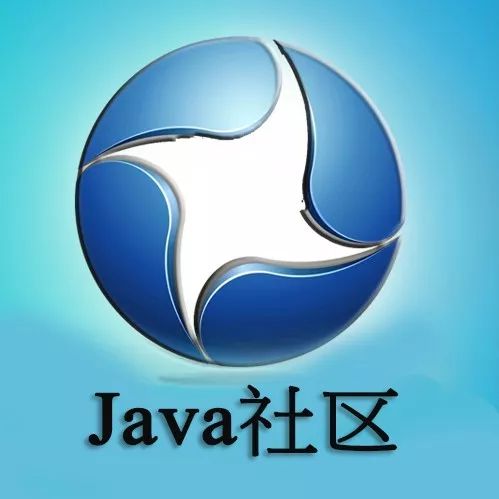点击上方“Java社区”,选择“设为星标”
学习的最好时刻是三年前,其次是现在。

来源:http://t.cn/Ez2s6ba
写在前面
不知大家有没遇到过像“横放着的金字塔”一样的 ifelse嵌套:
if (true) {
if (true) {
if (true) {
if (true) {
if (true) {
if (true) {
}
}
}
}
}
}
我并没夸大其词,我是真的遇到过了!嵌套6、7层,一个函数几百行,简!直!看!死!人!
ifelse作为每种编程语言都不可或缺的条件语句,我们在编程时会大量的用到。但 ifelse一般不建议嵌套超过三层,如果一段代码存在过多的 ifelse嵌套,代码的可读性就会急速下降,后期维护难度也大大提高。
所以,我们程序员都应该尽量避免过多的 ifelse嵌套。下面将会谈谈我在工作中如何减少 ifelse嵌套的。
正文
在谈我的方法之前,不妨先用个例子来说明 ifelse嵌套过多的弊端。
想象下一个简单分享的业务需求:支持分享链接、图片、文本和图文,分享结果回调给用户(为了不跑题,这里简略了业务,实际复杂得多)。
当接手到这么一个业务时,是不是觉得很简单,稍动下脑就可以动手了:
先定义分享的类型、分享Bean和分享回调类:
private static final int TYPE_LINK = 0;
private static final int TYPE_IMAGE = 1;
private static final int TYPE_TEXT = 2;
private static final int TYPE_IMAGE_TEXT = 3;
public class ShareItem {
int type;
String title;
String content;
String imagePath;
String link;
}
public interface ShareListener {
int STATE_SUCC = 0;
int STATE_FAIL = 1;
void onCallback(int state, String msg);
}
好了,然后在定义个分享接口,对每种类型分别进行分享就ok了:
public void share (ShareItem item, ShareListener listener) {
if (item != null) {
if (item.type == TYPE_LINK) {
// 分享链接
if (!TextUtils.isEmpty(item.link) && !TextUtils.isEmpty(item.title)) {
doShareLink(item.link, item.title, item.content, listener);
} else {
if (listener != null) {
listener.onCallback(ShareListener.STATE_FAIL, "分享信息不完整");
}
}
} else if (item.type == TYPE_IMAGE) {
// 分享图片
if (!TextUtils.isEmpty(item.imagePath)) {
doShareImage(item.imagePath, listener);
} else {
if (listener != null) {
listener.onCallback(ShareListener.STATE_FAIL, "分享信息不完整");
}
}
} else if (item.type == TYPE_TEXT) {
// 分享文本
if (!TextUtils.isEmpty(item.content)) {
doShareText(item.content, listener);
} else {
if (listener != null) {
listener.onCallback(ShareListener.STATE_FAIL, "分享信息不完整");
}
}
} else if (item.type == TYPE_IMAGE_TEXT) {
// 分享图文
if (!TextUtils.isEmpty(item.imagePath) && !TextUtils.isEmpty(item.content)) {
doShareImageAndText(item.imagePath, item.content, listener);
} else {
if (listener != null) {
listener.onCallback(ShareListener.STATE_FAIL, "分享信息不完整");
}
}
} else {
if (listener != null) {
listener.onCallback(ShareListener.STATE_FAIL, "不支持的分享类型");
}
}
} else {
if (listener != null) {
listener.onCallback(ShareListener.STATE_FAIL, "ShareItem 不能为 null");
}
}
}
到此,简单的分享模型就做出来了。有没问题?老实说,如果没什么追求的话,还真没什么问题,至少思路是清晰的。
但一周后呢?一个月后呢?或者一年后呢? share方法的分支有15条,这意味着你每次回看代码得让自己的大脑变成微型的处理器,考虑15种情况。
如果出现bug,你又得考虑15种情况,并15种情况都要测试下。再如果现在需要加多分享小视频功能,你又得添加多3个分支,还要改代码,一点都不“开放-闭合”。
再再如果后面项目交接给他人跟进,他人又要把自己大脑变成处理器来想每个分支的作用,我敢肯定有百分之八十的人都会吐槽代码。
我们程序员的脑力不应该花费在无止境的分支语句里的,应该专注于业务本身。所以我们很有必要避免写出多分支嵌套的语句。好的,我们来分析下上面的代码多分支的原因:
空值判断
业务判断
状态判断
几乎所有的业务都离不开这几个判断,从而导致 ifelse嵌套过多。那是不是没办法解决了?答案肯定不是的。
上面的代码我是用java写的,对于java程序员来说,空值判断简直使人很沮丧,让人身心疲惫。
上面的代码每次回调都要判断一次 listener是否为空,又要判断用户传入的 ShareItem是否为空,还要判断 ShareItem里面的字段是否为空......
对于这种情况,我采用的方法很简单:接口分层。
减少 if else 方法一:接口分层
所谓接口分层指的是:把接口分为外部和内部接口,所有空值判断放在外部接口完成,只处理一次;而内部接口传入的变量由外部接口保证不为空,从而减少空值判断。
来,看代码更加直观:
public void share(ShareItem item, ShareListener listener) {
if (item == null) {
if (listener != null) {
listener.onCallback(ShareListener.STATE_FAIL, "ShareItem 不能为 null");
}
return;
}
if (listener == null) {
listener = new ShareListener() {
@Override
public void onCallback(int state, String msg) {
Log.i("DEBUG", "ShareListener is null");
}
};
}
shareImpl(item, listener);
}
private void shareImpl (ShareItem item, ShareListener listener) {
if (item.type == TYPE_LINK) {
// 分享链接
if (!TextUtils.isEmpty(item.link) && !TextUtils.isEmpty(item.title)) {
doShareLink(item.link, item.title, item.content, listener);
} else {
listener.onCallback(ShareListener.STATE_FAIL, "分享信息不完整");
}
} else if (item.type == TYPE_IMAGE) {
// 分享图片
if (!TextUtils.isEmpty(item.imagePath)) {
doShareImage(item.imagePath, listener);
} else {
listener.onCallback(ShareListener.STATE_FAIL, "分享信息不完整");
}
} else if (item.type == TYPE_TEXT) {
// 分享文本
if (!TextUtils.isEmpty(item.content)) {
doShareText(item.content, listener);
} else {
listener.onCallback(ShareListener.STATE_FAIL, "分享信息不完整");
}
} else if (item.type == TYPE_IMAGE_TEXT) {
// 分享图文
if (!TextUtils.isEmpty(item.imagePath) && !TextUtils.isEmpty(item.content)) {
doShareImageAndText(item.imagePath, item.content, listener);
} else {
listener.onCallback(ShareListener.STATE_FAIL, "分享信息不完整");
}
} else {
listener.onCallback(ShareListener.STATE_FAIL, "不支持的分享类型");
}
}
可以看到,上面的代码分为外部接口 share和内部接口 shareImpl, ShareItem和 ShareListener的判断都放在 share里完成,那么 shareImpl就减少了 ifelse的嵌套了,相当于把 ifelse分摊了。
这样一来,代码的可读性好很多,嵌套也不超过3层了。
但可以看到, shareImpl里还是包含分享类型的判断,也即业务判断,我们都清楚产品经理的脑洞有多大了,分享的类型随时会改变或添加。
嗯说到这里相信大家都想到用多态了。多态不但能应付业务改变的情况,也可以用来减少 ifelse的嵌套。
减少 if else 方法二:多态
利用多态,每种业务单独处理,在接口不再做任何业务判断。把 ShareItem抽象出来,作为基础类,然后针对每种业务各自实现其子类:
public abstract class ShareItem {
int type;
public ShareItem(int type) {
this.type = type;
}
public abstract void doShare(ShareListener listener);
}
public class Link extends ShareItem {
String title;
String content;
String link;
public Link(String link, String title, String content) {
super(TYPE_LINK);
this.link = !TextUtils.isEmpty(link) ? link : "default";
this.title = !TextUtils.isEmpty(title) ? title : "default";
this.content = !TextUtils.isEmpty(content) ? content : "default";
}
@Override
public void doShare(ShareListener listener) {
// do share
}
}
public class Image extends ShareItem {
String imagePath;
public Image(String imagePath) {
super(TYPE_IMAGE);
this.imagePath = !TextUtils.isEmpty(imagePath) ? imagePath : "default";
}
@Override
public void doShare(ShareListener listener) {
// do share
}
}
public class Text extends ShareItem {
String content;
public Text(String content) {
super(TYPE_TEXT);
this.content = !TextUtils.isEmpty(content) ? content : "default";
}
@Override
public void doShare(ShareListener listener) {
// do share
}
}
public class ImageText extends ShareItem {
String content;
String imagePath;
public ImageText(String imagePath, String content) {
super(TYPE_IMAGE_TEXT);
this.imagePath = !TextUtils.isEmpty(imagePath) ? imagePath : "default";
this.content = !TextUtils.isEmpty(content) ? content : "default";
}
@Override
public void doShare(ShareListener listener) {
// do share
}
}
(注意:上面每个子类的构造方法还对每个字段做了空值处理,为空的话,赋值 default,这样如果用户传了空值,在调试就会发现问题。)
实现了多态后,分享接口的就简洁多了:
public void share(ShareItem item, ShareListener listener) {
if (item == null) {
if (listener != null) {
listener.onCallback(ShareListener.STATE_FAIL, "ShareItem 不能为 null");
}
return;
}
if (listener == null) {
listener = new ShareListener() {
@Override
public void onCallback(int state, String msg) {
Log.i("DEBUG", "ShareListener is null");
}
};
}
shareImpl(item, listener);
}
private void shareImpl (ShareItem item, ShareListener listener) {
item.doShare(listener);
}
嘻嘻,怎样,内部接口一个 ifelse都没了,是不是很酷~ 如果这个分享功能是自己App里面的功能,不是第三方SDK,到这里已经没问题了。
但如果是第三方分享SDK的功能的话,这样暴露给用户的类增加了很多(各 ShareItem的子类,相当于把 ifelse抛给用户了),用户的接入成本提高,违背了“迪米特原则”了。
处理这种情况也很简单,再次封装一层即可。把 ShareItem的子类的访问权限降低,在暴露给用户的主类里定义几个方法,在内部帮助用户创建具体的分享类型,这样用户就无需知道具体的类了:
public ShareItem createLinkShareItem(String link, String title, String content) {
return new Link(link, title, content);
}
public ShareItem createImageShareItem(String ImagePath) {
return new Image(ImagePath);
}
public ShareItem createTextShareItem(String content) {
return new Text(content);
}
public ShareItem createImageTextShareItem(String ImagePath, String content) {
return new ImageText(ImagePath, content);
}
或者有人会说,这样用户也需额外了解多几个方法。我个人觉得让用户了解多几个方法好过了解多几个类,而已方法名一看就能知道意图,成本还是挺小,是可以接受的。
其实这种情况,更多人想到的是使用工厂模式。嗯,工厂模式能解决这个问题(其实也需要用户额外了解多几个 type类型),但工厂模式难免又引入分支,我们可以用 Map消除分支。
减少 if else 方法三:使用Map替代分支语句
把所有分享类型预先缓存在 Map里,那么就可以直接 get获取具体类型,消除分支:
private Map<Integer, Class<? extends ShareItem>> map = new HashMap<>();
private void init() {
map.put(TYPE_LINK, Link.class);
map.put(TYPE_IMAGE, Image.class);
map.put(TYPE_TEXT, Text.class);
map.put(TYPE_IMAGE_TEXT, ImageText.class);
}
public ShareItem createShareItem(int type) {
try {
Class<? extends ShareItem> shareItemClass = map.get(type);
return shareItemClass.newInstance();
} catch (Exception e) {
return new DefaultShareItem(); // 返回默认实现,不要返回null
}
}
这种方式跟上面分为几个方法的方式各有利弊,看大家取舍了~
写在最后
讲到这里大家有没收获呢?总结下减少 ifelse的方法:
把接口分为外部和内部接口,所有空值判断放在外部接口完成;而内部接口传入的变量由外部接口保证不为空,从而减少空值判断。
利用多态,把业务判断消除,各子类分别关注自己的实现,并实现子类的创建方法,避免用户了解过多的类。
把分支状态信息预先缓存在
Map里,直接get获取具体值,消除分支。
好了,到此就介绍完了,希望大家以后写代码能注意,有则避之,无则加勉。希望大家写的代码越来越简洁~
推荐阅读:

喜欢就点一下「在看」呗~
本文分享自微信公众号 - Java社区(Java5206868)。
如有侵权,请联系 support@oschina.cn 删除。
本文参与“OSC源创计划”,欢迎正在阅读的你也加入,一起分享。
来源:oschina
链接:https://my.oschina.net/u/4279392/blog/4412355

